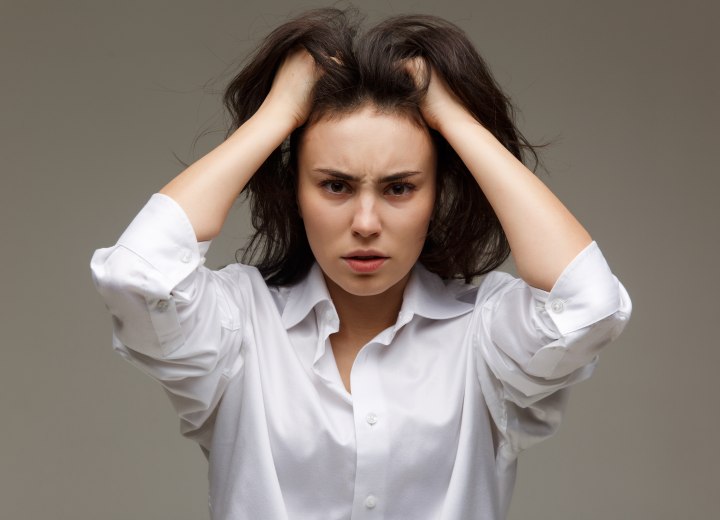Hair Color Stains

A: This is a common problem with hair color procedures. Because hair and skin are basically made from the same materials (keratinized protein) the process that gives color to the hair will also stain the skin when the color comes in contact with it.
It is possible that the skin can become stained AFTER the color process if the color given is strong enough that it bleeds when it gets wet again (from rain, perspiration, etc.). This is especially common with temporary and semi- or demi-permanent hair colors which either sit at the surface of the hair or easily pass through the cuticle layer.
The best thing to do is visit your nearby beauty supply store and look in the color aisle for "hair color stain remover". Most of the major hair color makers have their own brand of stain remover, and each works as well as the others. Most of them can be used without fear of hurting the color of your hair (for stains at the hairline). These are great, especially for women and men who have their eyebrows colored to match their hair for a natural look. They can simply apply the color to the brows and remove any stain afterward without stripping off the color.
If visiting a beauty supply store is not an option, you can use hydrogen peroxide found in any supermarket's first aid supplies section (or at a pharmacy). You should be careful with the hydrogen peroxide, though. If you get the peroxide onto the colored hair, it will fade the color. Most hydrogen peroxide solutions available for first aid use are very mild (2% peroxide by volume) and the lightening of the stain will be gradual.
There's also good old-fashioned perseverance and elbow grease. Because the hair color stains the surface of the skin, using a soft cloth and mild cleanser to wash the area repeatedly will buff away the stained skin cells. You may not be able to immediately remove the stain, but it will be lessened and will eventually be removed.
Finally, for extreme staining on areas like hands and arms, you can use chlorine bleach. However, be advised that chlorine bleach is very harsh (obviously) and can damage the skin if left on too long. Swab the stains with the bleach and allow them to be lightened, then immediately rinse the area with cold water and follow up by washing the area with soap and water. Apply moisturizer to the skin to restore the moisture and minimize any damage.
Some people are very sensitive to chlorine bleach and for them this is not an option. I have known women who use chlorine bleach to remove the stains from the facial area, by taking cotton puffs that have been moistened with bleach and wrung out then dabbing the stain with the bleach. I would suggest using extreme caution with this, especially with stains anywhere near the eyes.
A home remedy that works well for some people is the ash of cigarettes or cigars on a light moist cloth or tissue. It does the job fast and without hurting the skin. Baby oil on a wash cloth works very well for some people too.
©hairfinder.com
See also:
How to remove hair dye from your hands
How to remove hair color from nylon fabric